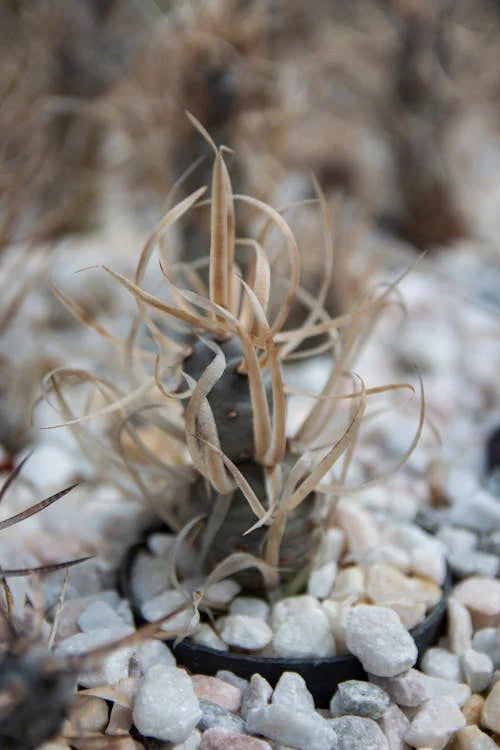
Care and maintenance of Tephrocactus – Breadcrumb cactus
Share
The Tephrocactus , also known as the Breadcrumb Cactus, is a unique appearance within the cacti family. With its striking spherical or cylindrical segments that seem to balance on each other, it is a real eye-catcher. This cactus originates from the dry, rocky regions of South America, mainly Argentina, and is perfectly adapted to extreme conditions. For plant lovers looking for something special, the Tephrocactus is an excellent choice.
Caring for the Tephrocactus is relatively easy, as long as you keep its natural habitat in mind. This cactus likes lots of light. Place it on a sunny windowsill or in a spot where it gets at least six hours of direct sunlight every day. In the summer months, you can place it outside, but make sure it is not exposed to a lot of rain, as excess moisture can cause root rot.
Watering the Tephrocactus requires some caution. As with most cacti, less is more. Only water it when the potting soil is completely dry, usually once every two weeks in spring and summer. During the winter, when the plant is dormant, it can get by with even less water. Make sure that excess water can drain away properly, because stagnant water is fatal for this plant.
A well-draining potting soil is essential. Use a special cactus and succulent soil or make your own mix of regular potting soil and sand or perlite. This helps prevent waterlogging. It is also important that the pot has drainage holes.
Fertilization is not often necessary, but can promote the growth and flowering of the Tephrocactus . During the growing season (spring and summer) use a liquid fertilizer specially formulated for cacti once a month. Stop fertilizing during the fall and winter.
As for pruning, the Tephrocactus is very low maintenance. The segments can easily be detached if they are stressed or if you want to propagate the plant. Simply place the detached segments on dry potting soil, and they will develop roots over time.
